Yakiniku is so much more than just grilling meat. It's an interactive, communal dining experience that you can absolutely recreate at home. Forget needing complex cooking skills; a memorable Japanese BBQ at home all comes down to finding great ingredients and doing some smart prep work. This guide will show you exactly how to get started.
Bringing The Yakiniku Experience Home
Let's get one thing straight: authentic Japanese BBQ is not some restaurant-only secret. At its heart, Yakiniku—which literally just means "grilled meat"—is all about gathering people around a grill to cook, share, and enjoy fantastic food together. The real magic happens when you see just how rewarding it is to host this in your own dining room or on your patio.
The entire experience is built on simplicity and quality. This isn’t about you slaving away in a hot kitchen for hours. Instead, the "cooking" is the main event, a fun and engaging activity for everyone at the table. The focus shifts from a single chef to the shared experience.
Understanding The Yakiniku Philosophy
Unlike a classic Western barbecue where one person stands guard over a huge grill, Yakiniku is a team sport. Everyone gets to participate, grilling small, bite-sized pieces of meat and vegetables exactly how they like them. It naturally creates a relaxed, conversational vibe that's tough to replicate.
This style of dining has exploded in popularity for at-home gatherings. The market for home cooking grills in Japan has grown rapidly, thanks to modern lifestyles and the realities of city living. There’s been a huge surge in demand for compact, efficient, and smokeless tabletop grills, making it easier than ever to enjoy Yakiniku even in apartments and smaller homes.
Yakiniku is fundamentally about the joy of cooking and eating together. Your role as the host is to be a curator of fine ingredients, not a short-order cook.
Key Components Of A Home Yakiniku Setup
Getting started only requires a few key pieces of gear. You can always expand your collection later, but these are the non-negotiables you'll need for an authentic experience. Before we get into specific products, it’s good to know the basic building blocks. For a deeper dive into the fundamentals, check out our guide on Japanese cooking basics.
Here's a quick look at the essential elements you'll need to gather to start your Japanese BBQ journey at home.
Essential Components For Your Home Yakiniku Setup
| Component | What to Look For | Why It's Important |
|---|---|---|
| Tabletop Grill | Electric smokeless, gas cassette, or charcoal konro | This is the centerpiece of the meal. Your choice depends on your space and the flavor you're after. |
| Quality Meats & Veggies | Thinly sliced beef, pork, chicken, mushrooms, squash | High-quality, well-prepped ingredients are the star and need very little seasoning to shine. |
| Dipping Sauces (Tare) | Soy-based, miso, or salt & sesame oil | These sauces provide the signature flavors that truly define the Yakiniku experience. |
| Essential Side Dishes | Steamed rice, pickles (tsukemono), edamame | They cleanse the palate and create a perfect balance to the rich, grilled flavors of the meat. |
With these components ready, you have the foundation for a truly unforgettable meal that's as much fun to prepare as it is to eat.
How To Choose The Perfect Japanese BBQ Grill
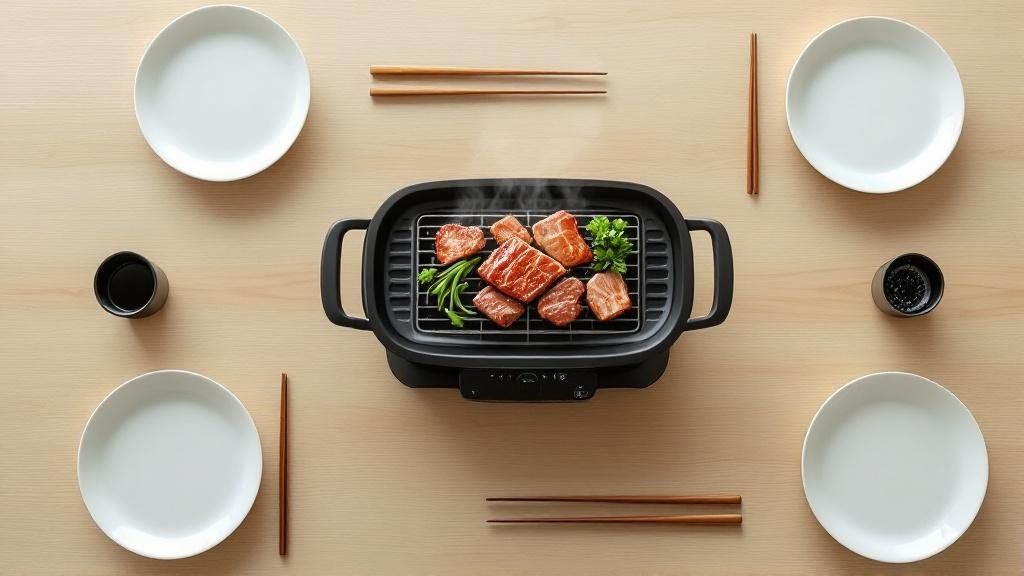
The grill is the absolute heart of your Japanese BBQ at home. It's what dictates the flavor, the cooking style, and even where you can host your meal. Choosing the right one isn't just about picking something off a shelf; it's about matching the equipment to your lifestyle, your space, and the specific Yakiniku experience you want to create.
Think of it this way: a traditional charcoal grill offers that incredible smoky flavor everyone craves, but it’s a non-starter if you live in an apartment. The key is to understand what's out there and align the grill's strengths with what you actually need.
Electric Smokeless Grills for Indoor Convenience
For many, especially those living in apartments or homes without much outdoor space, an electric smokeless grill is the perfect entry point into the world of Yakiniku. These are the real workhorses of indoor Japanese BBQ, designed specifically to minimize smoke and make cleanup almost effortless.
Top brands like Zojirushi and Iwatani have really perfected this technology. Most of their models feature a heating element cleverly positioned so that any meat drippings fall into a water tray below. This design is brilliant because it prevents grease from hitting a hot surface and creating smoke—the main reason grilling indoors can be a problem.
- Best For: Apartment dwellers, total beginners, and anyone who puts a premium on easy setup and cleanup.
- Key Feature: A water tray system that captures drips, dramatically cutting down on smoke and odors.
- Trade-off: While they're incredibly convenient, you won't get that deep, smoky flavor that only comes from charcoal.
Gas-Powered Cassette Grills for Portability
If you're looking for a bit more versatility, the gas-powered cassette grill is a fantastic step up. These portable units, made famous by brands like Iwatani, run on small, disposable butane canisters. They pack more of a punch than many electric models, giving you better temperature control to achieve a beautiful sear on your meat.
Their portability is their superpower. You can set one up on your dining table (with good ventilation, of course), take it out to a small balcony, or even pack it for a picnic. This flexibility is a huge win for anyone who wants a single grill that can handle multiple scenarios.
Your grill choice fundamentally shapes your Yakiniku experience. Consider your living space first—an indoor, smokeless electric grill is ideal for apartments, while a charcoal konro is perfect for those with a patio who crave authentic smoky flavor.
Traditional Charcoal Konro And Shichirin Grills
If authentic, smoky flavor is your non-negotiable top priority, then nothing beats a traditional charcoal grill. The konro (a rectangular grill) and shichirin (a smaller, round grill) are designed to burn binchotan, a special Japanese white charcoal that burns cleanly, at incredibly high temperatures, and for a very long time.
This perfect pairing of a compact grill and high-performance charcoal creates an intense, direct heat that sears the outside of the meat beautifully while keeping the inside unbelievably juicy. The subtle smoky aroma it imparts is what Yakiniku purists consider the absolute gold standard. But this authenticity comes with a critical responsibility: these grills must only be used outdoors or in a space with professional-grade ventilation.
Key Factors To Consider Before You Buy
Choosing your grill really comes down to balancing a few key factors. Here’s a quick breakdown of how the main options stack up against each other.
| Feature | Electric Grill | Gas Cassette Grill | Charcoal Konro/Shichirin |
|---|---|---|---|
| Best Location | Indoors | Indoors (with ventilation) or Outdoors | Outdoors Only |
| Flavor Profile | Clean, Unaltered | Slightly Seared | Rich, Smoky |
| Cleanup | Very Easy | Easy | More Involved |
| Heat Control | Good | Excellent | Requires Practice |
| Authenticity | Low | Medium | High |
For those with a dedicated outdoor space, you might also look at other versatile grills. A kamado-style cooker like The Big Green Egg, for example, offers a different style of charcoal cooking but is celebrated for its amazing temperature retention and flexibility.
Ultimately, your perfect grill is the one you'll actually use the most. Whether that’s a convenient electric model for spontaneous weeknight Yakiniku or a traditional charcoal konro for special weekend feasts, investing in the right tool will make your Japanese BBQ at home a recurring success.
Sourcing And Preparing The Best Ingredients
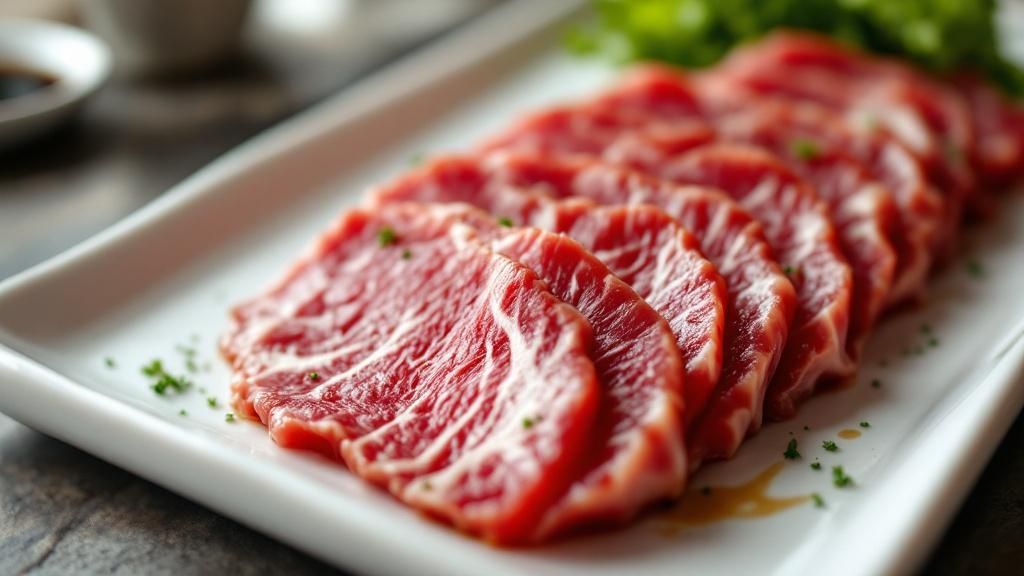
The secret to an authentic Japanese BBQ at home doesn't start with the grill—it starts with the ingredients. True Yakiniku is all about celebrating the incredible, natural flavor of high-quality meats and fresh vegetables. It's an exercise in simplicity and quality over complexity.
Think of yourself as a curator. You're not just cooking; you're assembling a beautiful, edible mosaic for you and your guests to enjoy. The goal is to build a platter that’s as visually exciting as it is delicious, filled with a variety of textures and tastes. Your entire meal hinges on getting these core components right.
Finding The Perfect Cuts Of Meat
Beef is the heart and soul of any great Yakiniku experience, and knowing what to ask for makes all the difference. While you can often find pre-sliced packs at a local Asian grocery store, I always recommend visiting a good butcher if you can. It truly elevates the meal.
Don't be shy about it. Tell them you're preparing for Japanese BBQ and need your cuts sliced very thinly—the sweet spot is around ⅛ inch (about 3mm) thick.
Here are the classic cuts you’ll want to look for:
- Karubi (カルビ): This is the king of Yakiniku. It’s a boneless short rib with beautiful, intricate marbling. As it cooks, that fat renders and bastes the meat, making it unbelievably juicy and packed with flavor. It’s almost always the most popular choice for a reason.
- Rosu (ロース): This term refers to loin cuts like sirloin or ribeye. Rosu is wonderfully tender with a more balanced meat-to-fat ratio. It offers a pure, classic beefy taste that's a bit less rich than Karubi but just as delicious.
- Harami (ハラミ): This is skirt steak, a personal favorite of mine for its deep, beefy flavor and incredibly satisfying texture. It might look leaner than other cuts, but it grills up surprisingly tender and takes on marinades like a dream.
While beef is the main event, don't sleep on the other options! Thinly sliced pork belly, or butabara (豚バラ), gets unbelievably crisp and savory on the grill. Chicken thigh is another fantastic choice; its higher fat content ensures it stays moist and flavorful over the hot charcoal.
Pro Tip: If your butcher gives you a blank stare when you mention "Yakiniku," just ask for a well-marbled cut like boneless short rib or ribeye. Then, simply ask them to slice it as thinly as possible. That thinness is absolutely critical for the quick, high-heat cooking style.
Preparing Your Meat For The Grill
Once you have your beautiful cuts of meat, the prep work is refreshingly simple. The most crucial part is getting that perfect, thin slice. If you’re slicing the meat yourself at home, here's a trick: pop it in the freezer for about 30-60 minutes. This firms it up just enough to make getting those paper-thin, consistent slices much, much easier.
When it comes to marinades, remember that less is more. The whole point is to enhance the meat's natural flavor, not mask it. A light marinade, applied just 20-30 minutes before grilling, is plenty. For the really prime cuts, sometimes all you need is a pinch of good salt and fresh-cracked pepper to let the quality shine through. This philosophy of simplicity is a cornerstone of Japanese cooking, and you can find more inspiration in many easy Japanese recipes.
Selecting And Prepping Vegetables
In Yakiniku, vegetables are never just an afterthought. They are a vital part of the interactive experience, providing a crisp, refreshing counterpoint to the rich, savory meats. They also add a welcome burst of color and texture to your grilling platter.
The trick is to choose vegetables that can stand up to the direct heat of the grill and to cut them for success. You want pieces large enough that they won't tragically fall through the grates but thin enough that they cook through in just a few minutes.
Here’s a quick guide I’ve put together over many home Yakiniku nights. It covers some classic pairings and how to prep them for the perfect Japanese BBQ at home.
Yakiniku Meat And Vegetable Pairing Guide
This table breaks down some of the most popular meats and vegetables you'll find at a Yakiniku restaurant, so you can bring that authentic experience home.
| Ingredient | Japanese Name (Romaji) | Flavor Profile & Texture | Best Preparation Tip |
|---|---|---|---|
| Short Rib | Karubi | Rich, fatty, and melts in your mouth | Grill until the edges are crispy and the fat has rendered. |
| Pork Belly | Butabara | Savory and crispy when cooked | Slice thinly and grill until golden brown for a bacon-like crunch. |
| Kabocha Squash | Kabocha | Sweet and starchy with a fluffy texture | Slice into ¼-inch rounds. Pre-microwaving for 1-2 minutes softens them for faster grilling. |
| Shiitake Mushroom | Shiitake | Earthy, umami-rich, and meaty | Remove the stem and score the top with a crosshatch pattern to help it cook evenly. |
| King Oyster Mushroom | Eringi | Mild and savory with a firm, scallop-like texture | Slice lengthwise into thick planks to maximize grill surface area. |
| Asparagus | Asuparagasu | Fresh, green, and slightly sweet | Snap off the woody ends and grill whole until tender-crisp. |
By taking the time to thoughtfully choose and prepare each element, you're not just making dinner—you're creating an event. The variety on the platter encourages everyone to get involved, experiment, and find their own perfect bite. That, right there, is the true spirit of Yakiniku.
Crafting Authentic Yakiniku Sauces And Marinades

If high-quality meat is the heart of a great Japanese BBQ at home, then the sauce, or tare, is its soul. This is what truly bridges the gap between simply grilling meat and creating an authentic Yakiniku experience. The real beauty of these sauces is their simplicity and the incredible depth of flavor they bring to the table.
You'll generally come across two kinds of sauce in the world of Yakiniku. First, there's the momidare, which is a marinade you'll use to lightly season the meat right before it hits the grill. The second, and arguably more important, is the tsukedare—the dipping sauce that lets everyone at the table customize their perfect bite. The best part? A single fantastic base recipe can often pull double duty as both.
The Foundation: A Classic Soy-Based Tare
A classic Yakiniku tare is all about that perfect balance of salty, sweet, and umami. It’s surprisingly easy to whip up at home, and honestly, it's worlds better than anything you can buy in a bottle. This foundational recipe is your starting point for achieving that genuine flavor.
To create a versatile tare that works beautifully as both a marinade and a dipping sauce, you'll need a few key ingredients:
- Soy Sauce: This is the salty, umami-rich backbone of your sauce.
- Mirin: A sweet Japanese rice wine that adds a beautiful gloss and subtle sweetness.
- Sake: Adds depth of flavor and helps to tenderize the meat.
- Sugar: Balances the saltiness and is crucial for getting that lovely caramelization on the grill.
- Sesame Oil: Lends a nutty, aromatic finish that’s unmistakably Yakiniku.
- Grated Garlic & Ginger: Provides a fresh, pungent kick that cuts right through the richness.
To make it, just combine everything in a small saucepan. Gently heat the mixture, stirring until the sugar is completely dissolved, but be careful not to let it boil. Let it cool completely, and it’s ready. That’s it. For an even deeper flavor, try making it a day ahead and letting the flavors meld in the fridge. This depth is one of the many reasons people explore the world of Japanese fermented foods, which are so central to the cuisine's iconic flavors.
The goal of a Yakiniku sauce isn’t to overpower the meat, but to complement it. A well-balanced tare should elevate the natural flavors of a quality beef short rib or a fresh shiitake mushroom, making each bite more memorable than the last.
Customizing Your Sauces
Once you've got the basic tare down, the fun really begins. You can easily tweak it to match your personal taste or the specific ingredients you're grilling. Think of the base recipe as your canvas.
For a Sweeter Profile: Try increasing the sugar or adding a touch of honey or even some grated apple. This works wonders with richer cuts like pork belly or Karubi, as the sweetness cuts through the fat beautifully.
For a Spicier Kick: Mix in a spoonful of gochujang (Korean chili paste) or some finely chopped red chili. This Korean-influenced twist adds a slow, building heat that is absolutely addictive with cuts like harami (skirt steak).
For a Lighter Touch: Sometimes, the best "sauce" is the simplest. A small dish of high-quality sea salt with a few drops of sesame oil and a squeeze of fresh lemon is a classic pairing, especially for high-grade, beautifully marbled beef. This minimalist approach really lets the quality of the meat shine through.
Marinating The Right Way
When it comes to Yakiniku, marinating is a quick affair. You aren't trying to cure the meat, just give it a light coating of flavor before it meets the intense heat of the grill. If you over-marinate, especially with thin slices, you risk making the meat too salty and causing it to burn quickly from the sugar in the sauce.
As a general rule, 15-30 minutes is the sweet spot for letting your meat sit in the momidare. Just toss the meat with a bit of the sauce in a bowl right before you’re ready to fire up the grill. Any longer, and you risk masking the delicious natural flavor you paid a premium for.
Mastering The Art Of Grilling And Serving
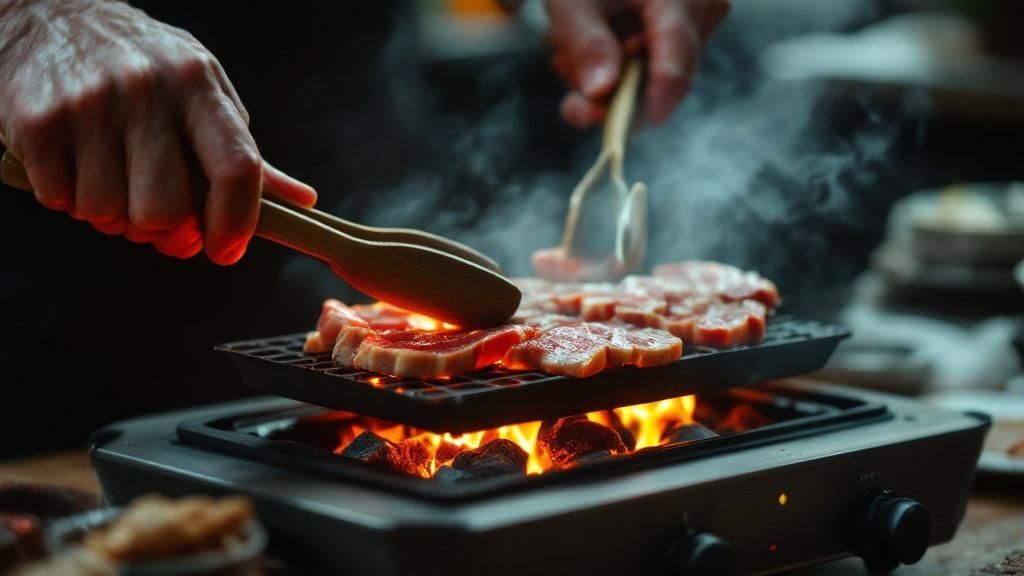
This is where the real fun begins. With your ingredients laid out and sauces at the ready, it's time to fire up the grill. The whole point of Japanese BBQ at home is to cook in small batches, enjoying each piece piping hot and fresh. It's an interactive experience that turns a simple meal into a lively, communal event.
You're essentially conducting a delicious symphony. The rhythm of grilling, dipping, and eating is something you and your guests create together, making every dinner unique.
The Art Of Pacing The Meal
Forget what you know about traditional barbecues where everything is cooked at once. Yakiniku is a marathon, not a sprint. The idea is to create a slow, steady stream of perfectly grilled bites that last the entire evening. This keeps the food fresh and hot, and more importantly, it encourages conversation and connection.
Start by placing just a few pieces of meat or vegetables on the grill. If you overcrowd it, the grill's temperature will drop, and you'll end up steaming your food instead of getting that beautiful, crackling sear everyone loves.
I like to think of the meal in waves. Start with something light, like chicken thighs or leaner beef cuts. Once everyone's settled in, bring out the rich, marbled karubi and fatty pork belly. Intersperse the meat with vegetables to cleanse the palate and add a bit of refreshing contrast.
Perfecting Your Grilling Technique
That perfect, mouth-watering sear comes down to two things: heat management and timing. Whether you’re using a traditional charcoal konro or a modern electric grill, you need that surface screaming hot before anything touches it. This intense initial heat is what kicks off the Maillard reaction, giving you that deep brown color and complex, savory flavor.
Since most Yakiniku cuts are sliced thin, they cook ridiculously fast—often in just a minute or two per side.
- For Meat: Watch for the edges to get crispy and the fat to sizzle and render. Flip it just once to get a great crust without overcooking.
- For Vegetables: Grill them until they're tender-crisp with clear grill marks. Soft veggies like mushrooms will be done in a flash, while denser ones like kabocha squash will need a bit more time.
A non-negotiable rule for both safety and etiquette: use two sets of tongs. One pair is strictly for placing raw meat on the grill, and the other is for taking cooked pieces off. This simple habit prevents cross-contamination and keeps the experience fun and worry-free for everyone.
Yakiniku is an interactive art form. The goal isn't just to cook food, but to create an engaging experience. Cook only a few pieces at a time, allowing each guest to enjoy their food at its peak—hot, juicy, and fresh from the grill.
Assembling The Perfect Yakiniku Table
How you set the table is almost as important as the food itself. A well-organized setup ensures the communal dining experience is seamless and enjoyable for everyone. Think of it as giving each guest their own personal "station" to dive into the feast.
A proper Yakiniku table setting should include these items for each person:
- A Small Plate: This is their landing zone for delicious, hot-off-the-grill morsels.
- Dipping Sauce Dishes: Provide a few small, individual bowls for the tsukedare (dipping sauce). Offering a couple of different sauces lets guests mix and match flavors.
- A Bowl of Steamed Rice: Fluffy, short-grain Japanese rice is an absolute must. It’s the perfect neutral canvas for the rich, savory flavors of the meat.
- Chopsticks: The essential tool for grabbing, dipping, and savoring every single bite.
Essential Side Dishes That Complete The Meal
While the grilled items are the stars of the show, the side dishes—or okazu—play a vital supporting role. They bring balance, texture, and a chance to refresh your palate between bites of rich, savory meat. You don’t need to go overboard; a few thoughtfully chosen sides are all it takes to elevate your Japanese BBQ at home.
Consider adding these classics to your spread:
- Japanese Pickles (Tsukemono): Crisp, tangy pickled cucumbers or daikon radish provide a sharp, refreshing crunch that cuts right through the richness.
- Edamame: Lightly salted, steamed edamame is a simple and fun-to-eat appetizer to enjoy while the grill is heating up.
- A Simple Salad: A light green salad tossed in a sesame or ginger vinaigrette adds a zesty, fresh element to the meal.
These accompaniments complete the culinary picture, making it feel just like an authentic Yakiniku experience in Japan. Of course, just as there are endless combinations in Yakiniku, the world of Japanese cuisine offers incredible variety. For another iconic taste, you might explore the many types of ramen you need to slurp. By mastering the art of grilling and thoughtful serving, you're creating more than just a meal—you're creating a memory.
Your Japanese BBQ At Home Questions Answered
Even with the best guide in hand, a few questions are bound to pop up before you fire up the grill for your first yakiniku night. That’s perfectly normal. I've gathered the most common questions and worries I hear to help make sure your Japanese BBQ at home is a massive success.
Think of this as your go-to troubleshooting section. We'll tackle everything from smoke control to the key differences between yakiniku and other grilling styles, giving you the confidence to host like you've been doing it for years.
How Do I Manage Smoke Indoors?
This is, without a doubt, the biggest concern for anyone living in an apartment or a house without a patio. Smoke control is the key to a pleasant indoor grilling session, and the good news is, it's totally manageable.
Your first move should be picking the right gear. An electric smokeless grill is designed for exactly this scenario. These grills usually have a water-filled drip tray, which is a game-changer. It instantly cools any fat drippings, preventing them from sizzling, burning, and creating that dreaded smoke.
Next up: ventilation. Even the best "smokeless" grill needs a little help. Crack open a window or two. If your grill is in the kitchen, get that range hood running on high. This simple step keeps the air circulating and whisks away any lingering cooking smells before they settle in.
Finally, consider your ingredients. Super fatty cuts of meat will naturally create more smoke as all that delicious fat renders down. If smoke is a real worry, you can trim off some excess fat beforehand or lean into slightly less marbled cuts. Also, be mindful of sugary marinades—sugar can burn on the hot grill surface and contribute to smoke.
Can I Prepare Everything In Advance?
Absolutely! In fact, you should. One of the greatest things about hosting a yakiniku party is how much you can prep ahead of time. This is your ticket to a low-stress event where you actually get to have fun.
- Meats & Vegetables: Go ahead and slice all your proteins and veggies. You can get them portioned out and stored in airtight containers in the fridge up to 24 hours ahead of time.
- Sauces & Marinades: Both your dipping sauce (tare) and marinade (momidare) can be mixed a day or two in advance. I find their flavors actually get better and more complex after resting overnight.
When your guests arrive, all you have to do is artfully arrange the ingredients on platters, pour the sauces into dipping bowls, and turn on the grill. This lets you relax and enjoy the meal right along with everyone else.
Yakiniku Versus Korean BBQ What Is The Difference?
At first glance, they seem pretty similar—both are fun, interactive tabletop grilling experiences. But once you dig in, you'll find that Yakiniku and Korean BBQ (KBBQ) have very different personalities, mostly rooted in their flavor profiles and the dishes served alongside the main event.
Yakiniku sauces, or tare, are typically based on soy sauce, balanced with the subtle sweetness of mirin and the depth of sake. The entire philosophy is to complement and highlight the natural, pure flavor of the high-quality meat itself.
Korean BBQ, on the other hand, leans into bolder, more pungent marinades. Ingredients like gochujang (fermented chili paste) and gochugaru (chili powder) are common, creating much spicier and more robust flavors that permeate the meat.
The biggest giveaway is the side dish situation. Yakiniku is traditionally served with simple, clean-tasting accompaniments like steamed rice and light pickles. KBBQ is famous for its elaborate spread of banchan—a whole constellation of small side dishes like kimchi, seasoned spinach, and savory pancakes that create a complex tapestry of flavors.
Are There Vegetarian Or Vegan Options?
Japanese BBQ is incredibly easy to adapt for vegetarian and vegan guests. The interactive fun of grilling is the main event, and you don't need meat to enjoy it. Firm tofu and seitan are fantastic substitutes; just press them well to remove excess water and marinate them in a vegan tare sauce before they hit the grill.
Vegetables are already a huge part of the experience. The trick is to offer a wide variety to make it a truly satisfying meal:
- Hearty Veggies: King oyster mushrooms, kabocha squash, and shiitake mushrooms take on a wonderful, meaty texture when grilled.
- Classic Favorites: You can never go wrong with asparagus, bell peppers, thick-sliced onions, and zucchini.
- A Unique Addition: Try grilling pre-cooked rice cakes (mochi). They get perfectly crispy on the outside while staying delightfully soft and chewy on the inside.
Serve all these grilled goodies with plenty of steamed rice and a good vegan dipping sauce for a complete plant-based feast. Balancing these rich grilled flavors with mindful eating is a key part of the culture, and you can explore more about this in our article on the Japanese diet for weight loss.
Ready to start your culinary adventure? At Buy Me Japan, we bring the best of Japan right to your kitchen. From essential pantry items to unique snacks that can complement your Yakiniku night, we make it easy to source authentic ingredients. Explore our curated collection today and discover the quality that makes Japanese cuisine so special.
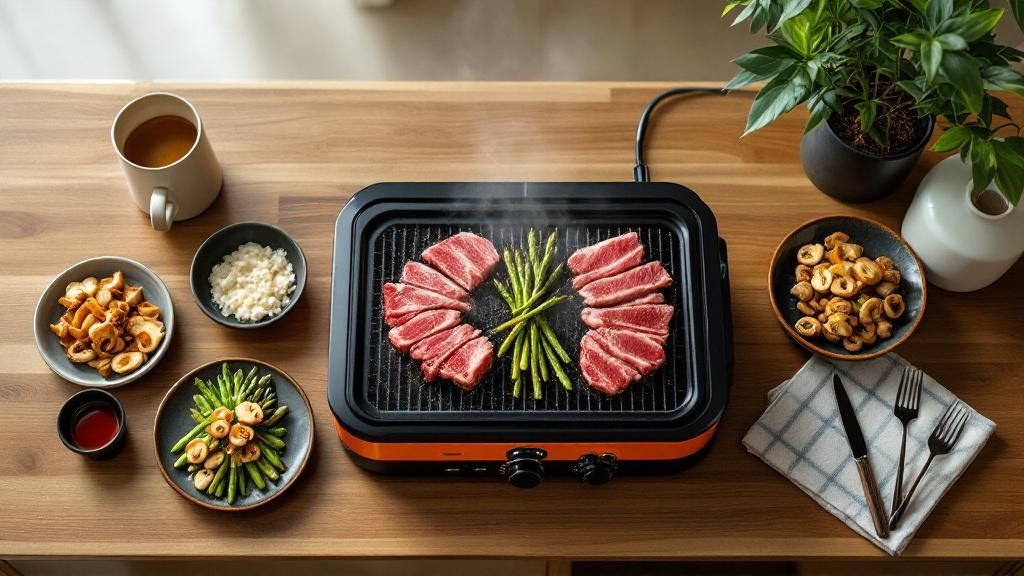
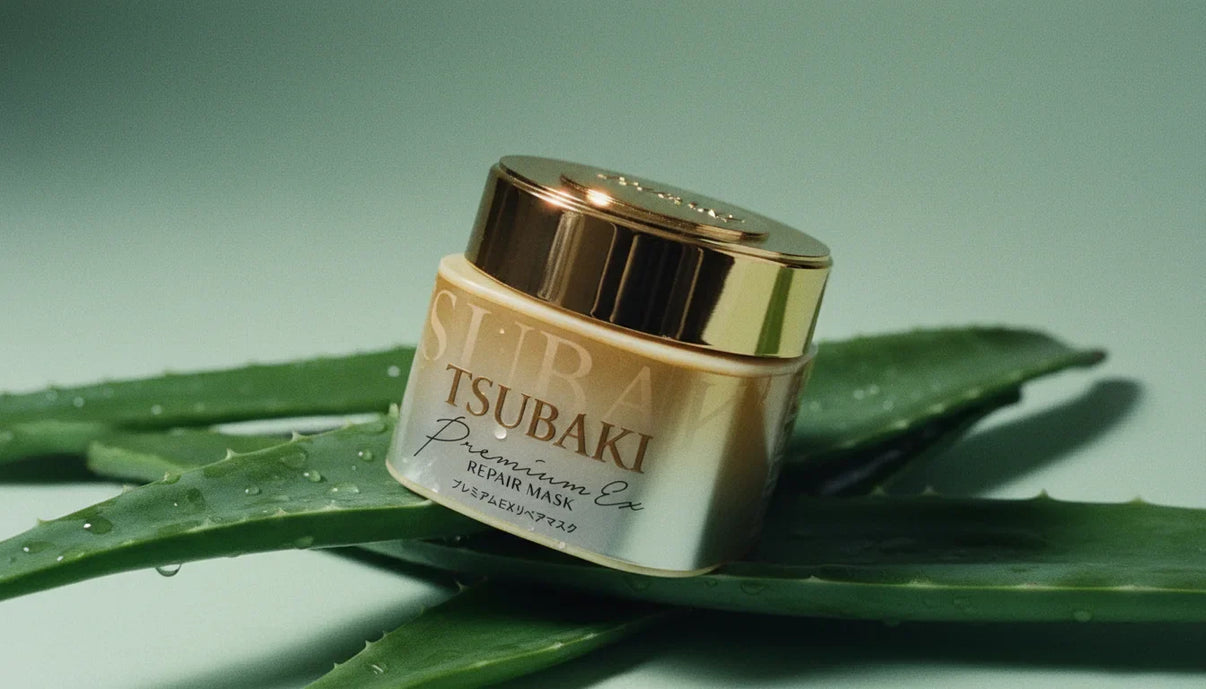

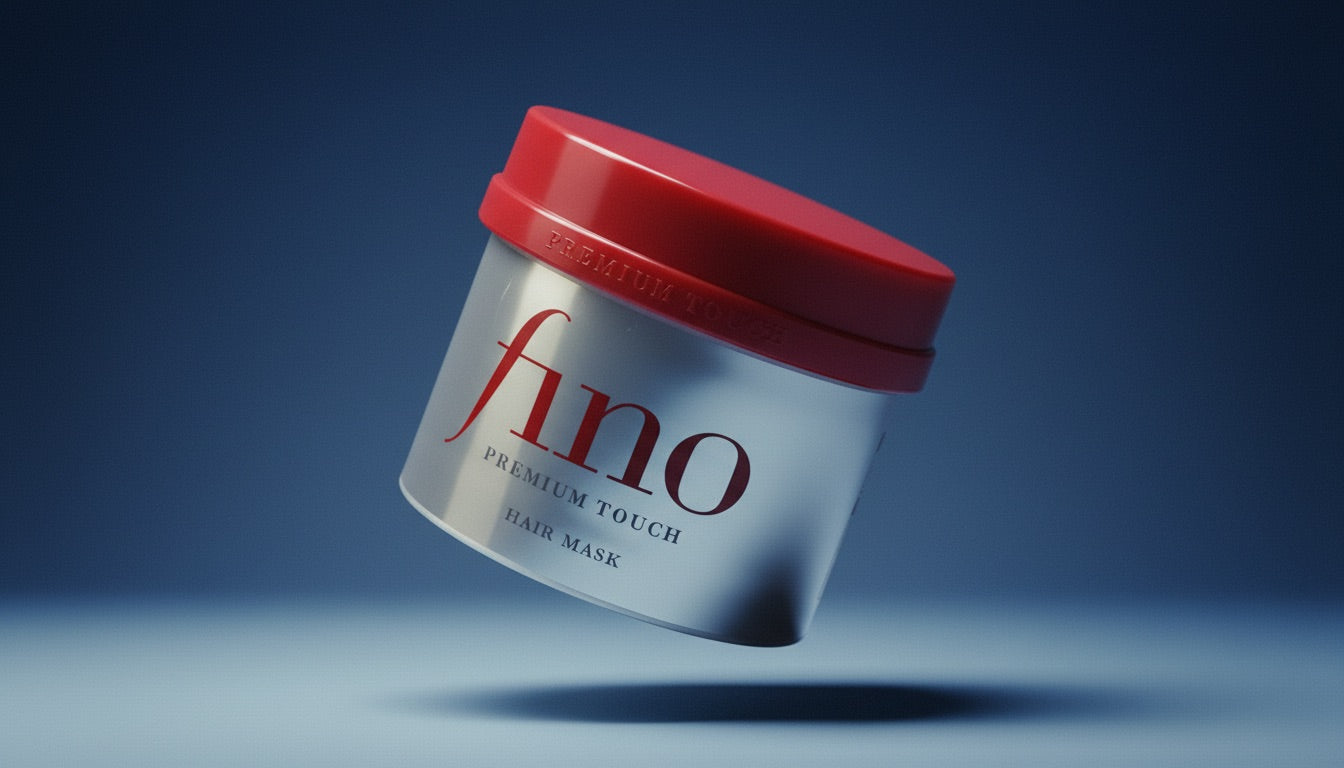
Share:
Healthy Japanese Snacks to Satisfy Your Cravings
How to Apply Hyaluronic Acid Serum for Glowing Skin